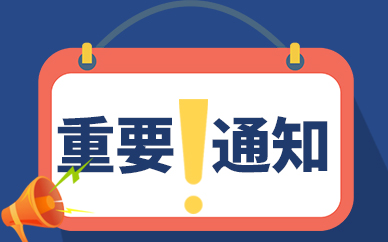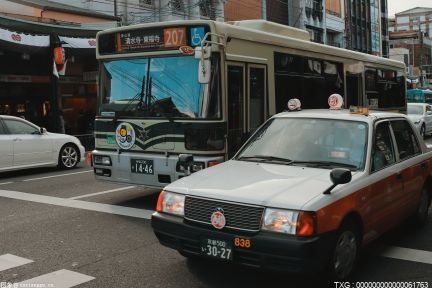Image Source: Visual China
 (资料图片)
(资料图片)
BEIJING, April 13 (TMTPOST) — ByteDance’s TikTok stepped up efforts in online shopping campaigns in Thailand, a major move of its expansion initiatives in Southeast Asia. By kicking off local shopping events to attract shoppers to the TikTok Shop, its e-commerce marketplace, the company was trying to take on local competitors Shopee and the Alibaba-backed Lazada.
From March 30 to April 4, TikTok launched a summer sale, during which all orders on TikTok Shop enjoyed free shipping. Coupons of up to 1,000 baht or a discount of up to 80 percent were also available.
The sales promotion came amid the busy season with an array of traditional festivals in Southeast Asian countries, such as Songkran in Thailand and Hari Raya in Malaysia. By choosing such timing, the company intended to bring about the first shopping spree for local merchants in 2023.
To pull it off, TikTok mobilized resources from six countries, including Britain, Malaysia, Singapore, the Philippines, Thailand and Vietnam. They were poured into live streaming, where certain merchants and influencers were invited by the platform to reach the goals of gross merchandise value (GMV). By giving incentive rights and interests, such as more traffic, coupons and extra exposure in certain places in the app, TikTok tries to integrate different digital channels, including short videos, live streaming and the marketplace, to grow live commerce.
March Into Southeast AsiaThe short video app has been cashing out its users in Southeast Asia with e-commerce push.
TikTok Shop went online in Indonesia and Britain in 2021. With this shopping platform, customers were able to shop for products they found in short videos and live streams on the app. An integrated marketing plan was released later for TikTok Shop to collaborate with e-commerce platforms, which were promised to extra exposure.
“TikTok will focus on the Southeast Asian market in 2022. It is expected that we will expand our reach into 20 key markets. And starting from there, in the next five years, TikTok Shop will enter the major mainstream markets around the world, with TikTok Shop reaching a scale of hundreds of billions of dollars,” said Bob Kang, vice president and head of e-commerce business at ByteDance in December 2021.
As of June 2022, five more countries, i.e. Vietnam, Thailand, Malaysia, the Philippines and Singapore, were included into the map. The e-commerce services also became available to cross-border retailers, in addition to local enterprises and individual sellers. By the end of the same year, five out of the seven countries with cross-border e-commerce presence of TikTok Shop were located in Southeast Asia, accounting for nearly half of the total number of Southeast Asian countries.
The Southeast Asian region, including Indonesia, has become the main contributor to TikTok e-commerce GMV. Indonesia took up 70 percent of the one-billion-dollar GMV in 2021. The number climbed to over 91 percent in the first half of 2022, while that of Britain was less than 7 percent, according to e-commerce data provider TiChoo. Other Southeast Asian countries were quickly catching up in the latter half of last year, as TikTok’s e-commerce businesses got started in early 2022. By August 2022, the GMV of Thailand, Vietnam, Malaysia, and the Philippines accounted for nearly a half.
Why Southeast Asia?A broad user base brought by the app TikTok, a vast e-commerce market and a complete set of digital infrastructure in the region drive TikTok Shop to land here.
Southeast Asian consumers share similar culture and consumption habits to the Chinese ones. With rising the Internet penetration rate and maturing e-commerce infrastructure in the region, local people are shifting to online shopping.
For the past few years, TikTok has been one of the most downloaded apps. According to analytics company Sensor Tower, TikTok had more than 360 million downloads in Southeast Asia in 2020, nearly half of the 630 million local population. The app had 240 million active users in 2022, as Manas Sabnis, head brand strategy at TikTok SEA & India, said. The large user base laid a solid foundation for TikTok Shop to grow in the region.
E-commerce in Southeast Asia is expanding at the faster pace, compared with Europe and the United States. According to data from market research company eMarketer, among the top ten countries with the highest growth rates, Southeast Asian countries took up a half, with Singapore topping the list with a growth rate of 36 percent. In terms of e-commerce growth, the revenue of e-commerce in the region was 120 billion dollars in 2021. The scale of its e-commerce market was expected to double by 2025, reaching 234 billion dollars.
Evidence can also be found from the global sales of TikTok Shop in 2022. After cross-border e-commerce opened up in the five Southeast Asian countries, the GMV of TikTok"s live stream exceeded 4.4 billion dollars, a two-fold increase from 2021. The top three sellers were the Skintificid and BIOAQUA Official Store from Indonesia, as well as the Vietnamese shop TRANG CEE STORE, with all of which selling items favored by female customers, such as cosmetics, skincare products, lingerie and bags. Among them, the GMV of Skintificid reached 50 million dollars in 2022. In terms of categories, the small shops at the forefront focus on beauty and personal care, lingerie, as well as bags.
The digitalization supported the rapid growth of e-commerce in Southeast Asia. The digital economy in Southeast Asian countries has been thriving, despite the Covid-19 pandemic and the large-scale geopolitical conflicts since 2020, according to a report by Google, Temasek and Bain Capital. The recent two years witnessed the growth of 60 million online consumers. In 2021, the digital economy market in Southeast Asia reached 174 billion dollars. It is expected to double to 360 billion by 2025, and to 1,000 billion by 2030.
Among the 600 million population in this region in 2021, 440 million have access to the Internet. 350 million of them have shopped online. With nearly 70 percent of the population being smartphone users, Southeast Asia became the region that embraced the digital payment at the fastest speed. The year-over-year growth rate of electronic wallets in the six populous countries, including Vietnam, Thailand, the Philippines, Malaysia, Singapore, and Indonesia, exceeded 311 percent in 2021. Online payment users are expected to surpass 440 million people in 2025.
Another advantage is that the majority of the population is still young. In the Philippines, the median age of its citizens is 25.7 years, much younger than the 38.4 of China and the 48.4 of Japan.
“The political situation in Southeast Asia is relatively stable, the economy is growing rapidly, and the young population is large. Moreover, there are many Chinese in this region, which lowers the cost of communication. These elements offer Chinese enterprises a bright future. With the signing of multiple tariff and trade agreements, the cross-border exchanges between China and Southeast Asia have huge room for growth,” said Jiang Han, a senior researcher at the public policy research institute Pangoal Institution.
Scrutiny LingersTikTok’s cross-border e-commerce growth has met with increasing pressure from local regulators.
The U.S. House Committee on Energy and Commerce held a five-hour hearing on TikTok in March, questioning its CEO Shou Zi Chew about concerns over data privacy, children’s usage and inappropriate content. Before that, TikTok’s parent company ByteDance has already been told by the U.S. government to divest its stake in TikTok, otherwise the app would face a possible ban.
The same risks have also hung over the company in Southeast Asia. In February 2019, the Bangladesh government banned TikTok in a crackdown on pornography. Two months later, the app was no longer available on app stores in India.
The reason for such bans boils down to the control over data between local governments and TikTok, although they battled over issues like pornography, kids’ usage and data privacy. According to Zhang Yiming, the founder of ByteDance, data mining of users’ preferences and targeted distribution based on algorithms are the key technologies. A data pool was built in this process.
Let’s take India as an example. TikTok was first banned in India in on April 3, 2019, due to government"s concerns over "pornographic and inappropriate content" being shared on the platform. The ban was lifted on April 24, 2019, after TikTok successfully appealed the decision and assured the court that it would implement measures to moderate the content shared on its platform. The national regulators were also urging global tech giants to build local servers and migrate Indian user data to achieve data localization. In July 2019, ByteDance responded that the company would build data centers in India in the next 6 to 18 months, with an initial investment of 100 million dollars.
However, TikTok faced another ban, along with several other Chinese apps, in June 2020, because of the local government"s concerns over national security and data privacy. The Indian regulators said the decision was "to protect the data and privacy of its 1.3 billion citizens" and to put a stop to technology that was "stealing and surreptitiously transmitting users" data in unauthorized servers outside India". The app has been banned in India since then.
Despite the ban in India, ByteDance stays in other Southeast Asian countries where the regulations are less harsh, compared with other countries such as the U.S.
“Although the technological innovation represented by TikTok will cause conflicts with the existing laws and potential risks, effective law creation, interpretation and application will be able to regulate them…What we should be thinking about is how to manage the risks, instead of nipping the technology itself,” Feng Shuo wrote in his paper Data Game and Legal Response to TikTok’s Banning.
Local CompetitorsIn addition to regulatory scrutiny, TikTok faces tough competition in Southeast Asian e-commerce market, such as the two giants Shopee and Lazada.
Singapore-based multinational e-commerce firm Shopee, launched in 2015, has now become the largest e-commerce platform in Southeast Asia. In Vietnam, the 2022 Vietnam E-commerce Market Report released by Metric shows that the total revenue of Vietnam’s four major e-commerce platforms, which are Shopee, Lazada, Tiki and Sendo, reached 135 trillion VND. As the most popular one, Shopee accounted for nearly 73 percent, three times that of the second-ranked Lazada.
The situation is quite similar in Malaysia, where Shopee holds 71 percent of the region"s e-commerce web traffic, followed by Lazada with 18 percent.
Like TikTok Shop, Alibaba-backed Lazada, which was founded in 2012 , is also present in six S outheast Asian countries — Indonesia, Malaysia, the Philippines, Singapore, Thailand and Vietnam. Alibaba first invested in Lazada in April 2016, when it acquired 51 percent of the company for 1 billion dollars. It added another 1 billion to increase its stake to 83 percent. In December 2022, Alibaba invested extra 342.5 million dollars into the company, in addition to the 378.3 million and 912.5 million in May and August.
关键词:

























































































